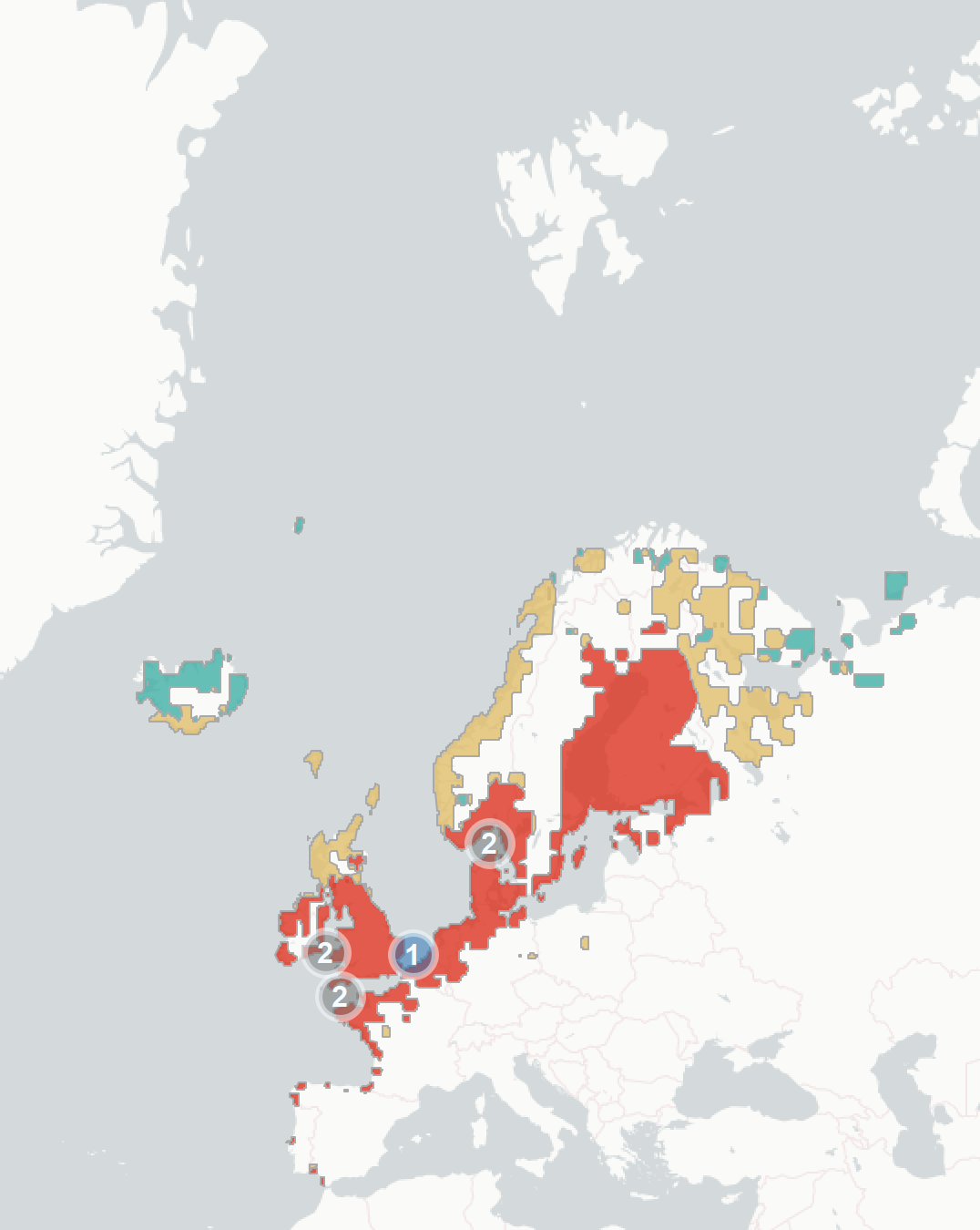Lesser Black-backed Gull (Larus fuscus): vulnerability to climate change
Evidence for exposure
Potential changes in breeding habitat suitability:
-
Current breeding area that is likely to become less suitable (61% of current range)
-
Current breeding area that is likely to remain suitable (27%)
-
Current breeding area that is likely to become more suitable (12%)
Current impacts to Lesser Black-backed Gulls attributed to climate change:
-
Positive Impact: Increased prey availability during the breeding season has led to population growth
Predicted changes in key prey species:
-
Key prey species are likely to decline in abundance on the south coast of Norway, the southern Irish Sea and along the Brittany Coast
Sensitivity
-
Lesser black backed gulls typically nest in low-lying or exposed areas, which makes them vulnerable to storms and flooding. More frequent extreme storms or flooding during the breeding season could have severe effects on populations.
-
During heatwaves, herring gulls eggs and chicks have been observed suffering high stress and mortality. The overall impact of this on the population is unknown, but it appears herring gulls, especially in exposed areas, are vulnerable to heatwaves and increased frequency and intensity is likely to lower breeding success.
-
This species has a long generation length (>10 years), which may slow recovery from severe impacts and increases population extinction risk
Adaptive capacity
-
Extremely variable diet, and able to exploit many available food sources. This is likely to make lesser black backed gulls more resilient to climate change, but note that many individual populations are specialised and are highly reliant on one or a few sources of food (e.g. human discards). Plasticity is therefore likely to vary across populations.
-
Lesser black backed gulls are also adept at using urban environments which may buffer populations if natural diet or habitat is limited.
-
Under the right circumstances, lesser black backed gulls can establish new colonies. While they tend to have some site fidelity (especially adults), they have been observed to colonise new areas over time if new areas are particularly high-quality or if previous area is disturbed.
